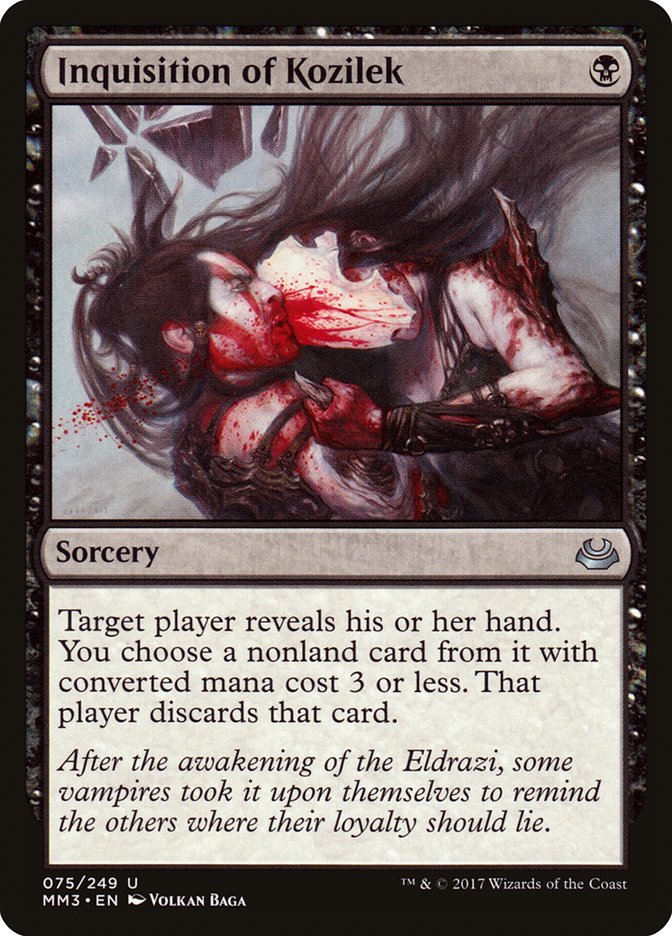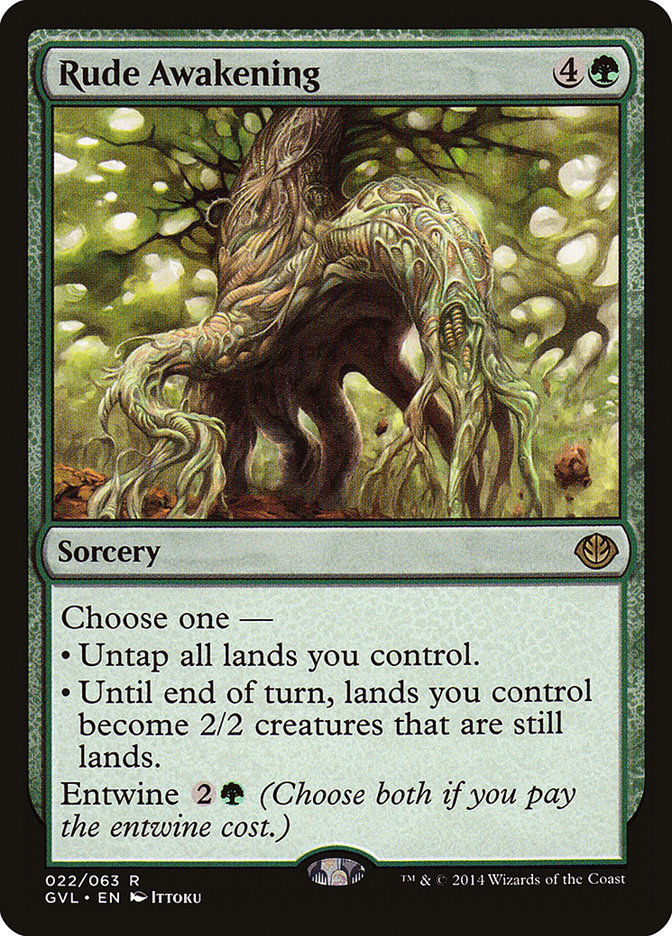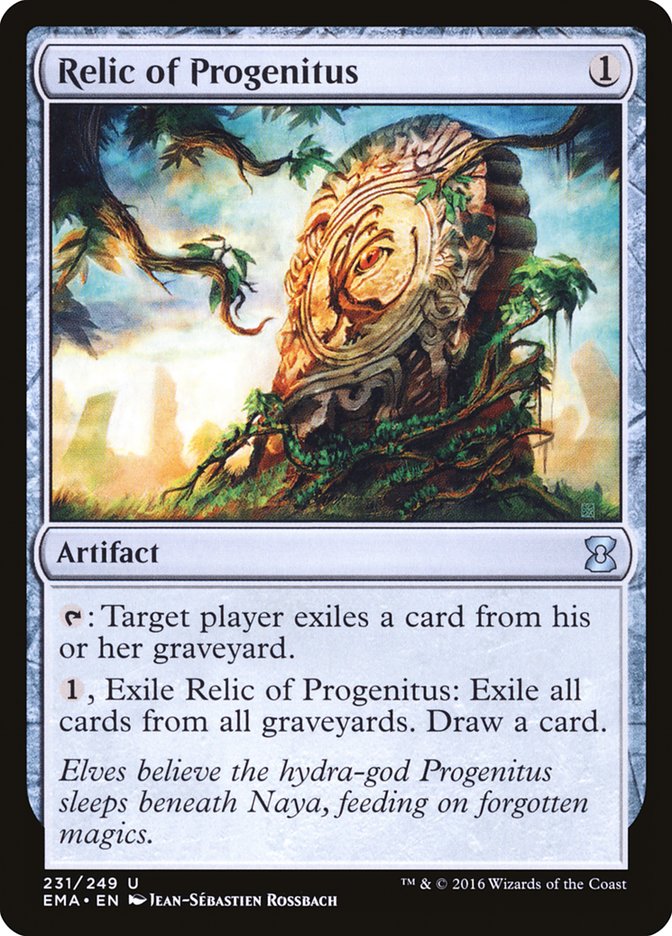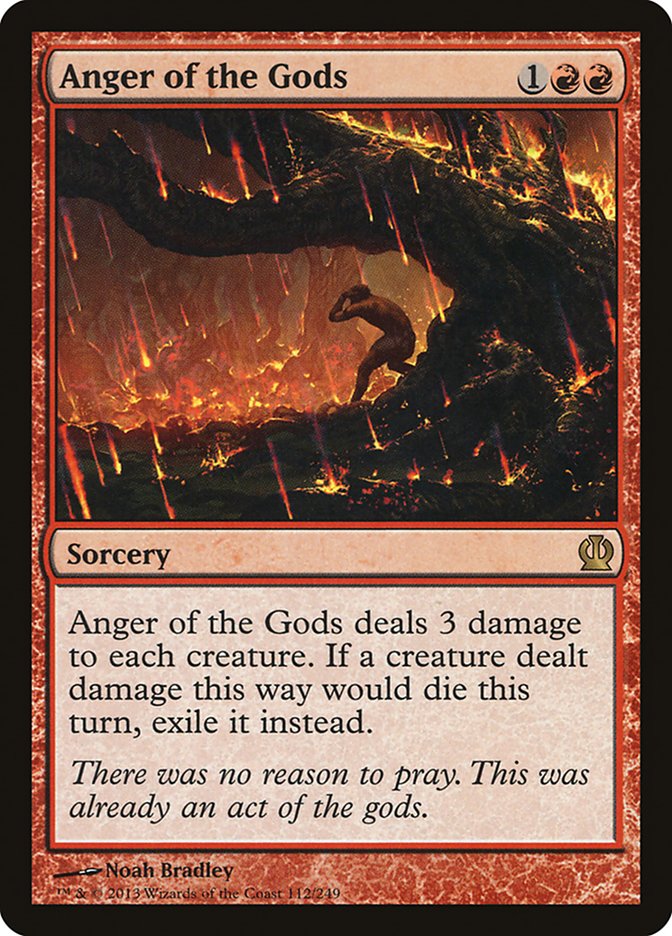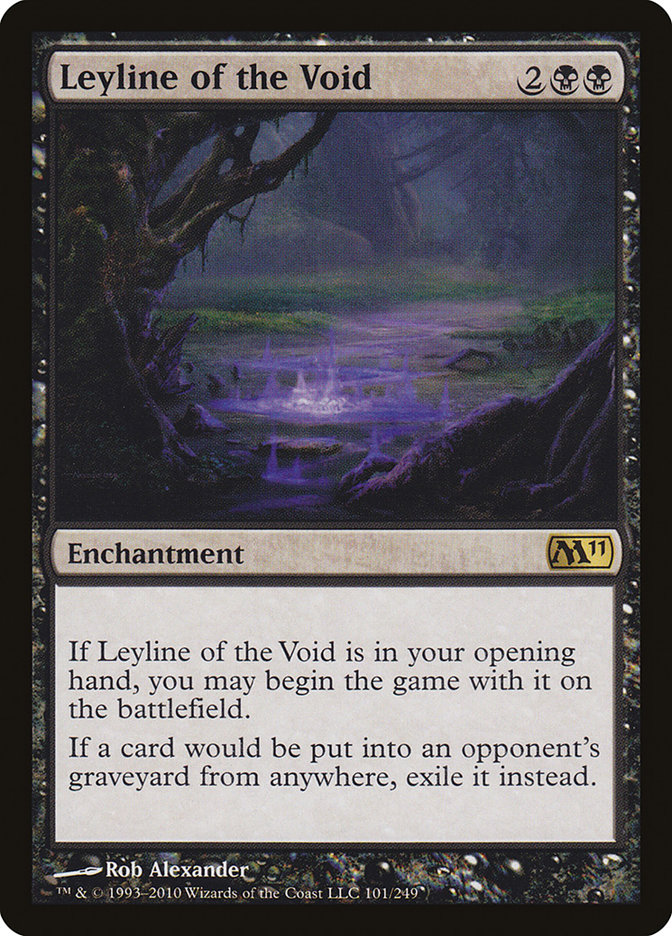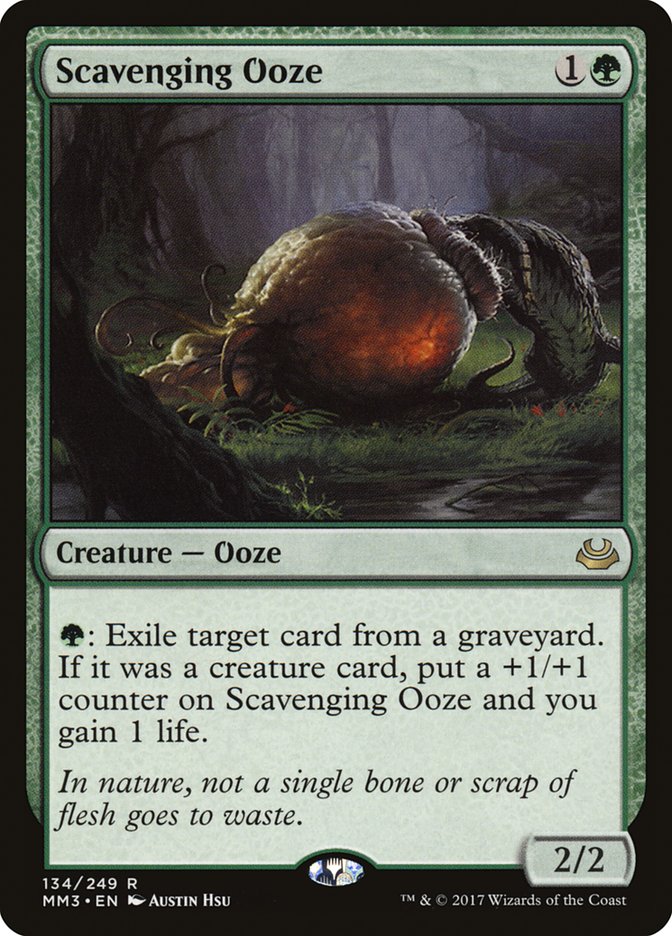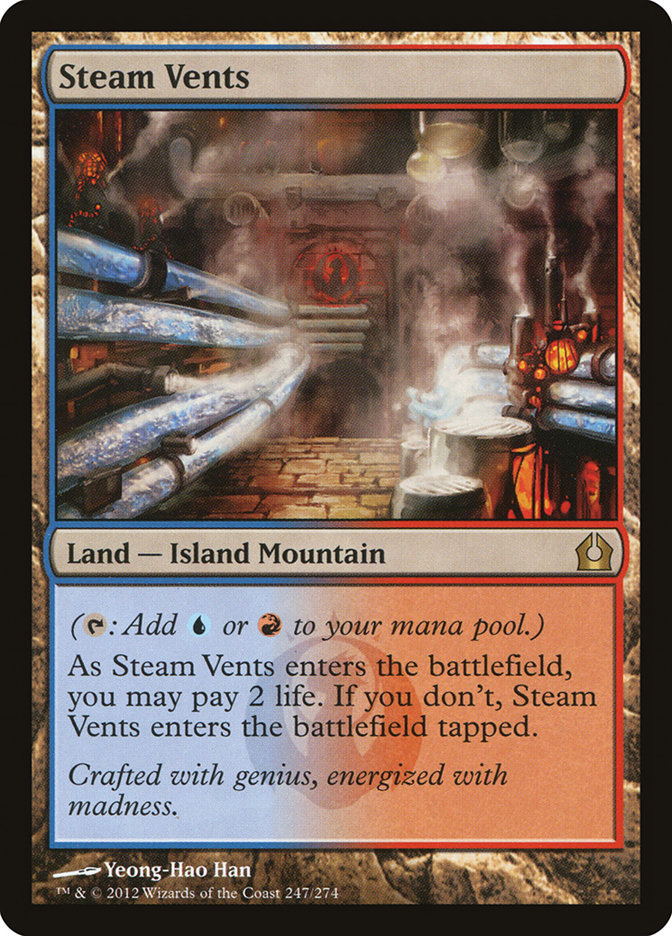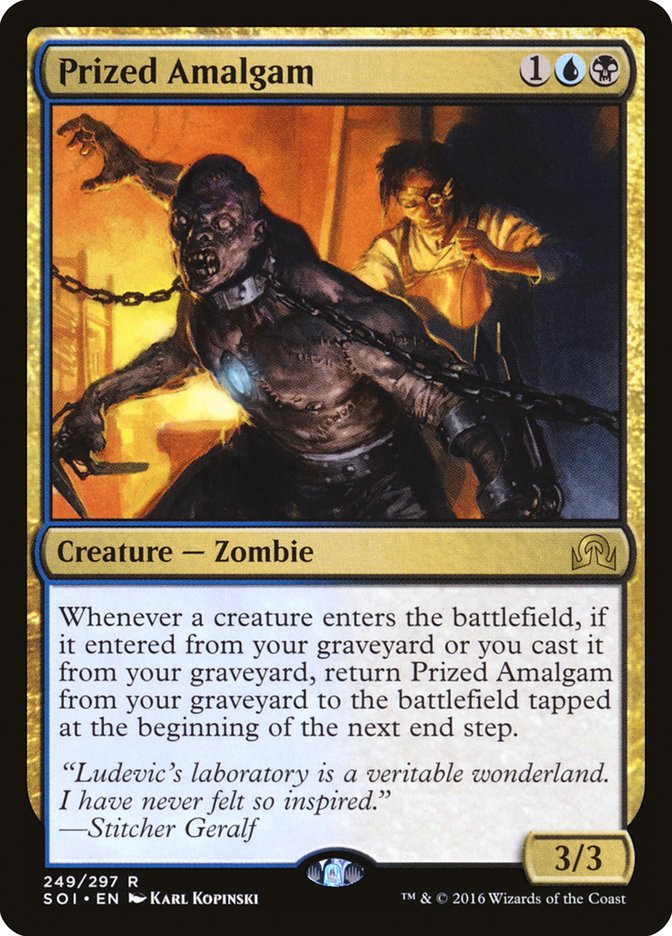Last week we went over all the theory of Dredge: what to expect playing the deck, understanding the philosophy of the deck, and examining the cards themselves. Today we put it all into practice.
To refresh:
Creatures (23)
Lands (20)
Spells (17)

Dredge is a complicated deck, but one that has a number of recognizable play patterns. For a deck with so many bizarre cards in it, each game plays out in relatively consistent fashion. To recap, our game to game plan is essentially:
1. Get dredge cards into our graveyard.
2. Use our red draw spells to dredge via multiple draw replacements.
3. Return as many copies of Prized Amalgam and Bloodghast to the battlefield as possible.
4. Utilize Life from the Loam to make land drops and buffer our hand size.
5. Use Conflagrate as either a finishing blow or to deal with our opponent’s battlefield.
6. Rinse and repeat.
Because we never really draw any new cards once our engine gets rolling, our opening hand is extremely important, as it allows us to script out our gameplan. To properly execute the gameplan listed above, our opening hand needs to meet these criteria:
1. At least two lands, one of which is green.
2. A dredge card.
3. A red draw spell.
Of course, some of these are interchangeable in different ways. A hand with two lands and a bunch of Faithless Lootings will be a pretty big favorite to find a dredge card by turn 2, so the potential for a dredge card can fit the bill sometimes. Another possible substitution is a good hand that lacks green mana but has at least three lands. While you don’t often want to play without Life from the Loam, if the hand is explosive enough, the third land can guarantee flashing back Faithless Looting as well as recurring Bloodghast it can be good enough.
Let’s look at some sample hands and discuss how they would each play out. Planning out our first few turns with each hand will quickly illuminate if it is a hand that should be kept or not.
Keep or Mulligan?
Turn 1: Dakmor Salvage tapped.
Turn 2: Copperline Gorge, Life from the Loam for nothing.
Turn 3: Dredge Life from the Loam on our draw step, and have very few options available to us.
As we can see, our first hand is clearly a stinker. It does not have a card draw spell, and therefore has no way to either get dredge cards into our graveyard or dredge them quickly. This hand will do nothing for far too long to be effective in any way.
Verdict: Mulligan.
This one is pretty clear.
Tip: If this hand had two fetchlands instead of Dakmor Salvage and Copperline Gorge, it could become keepable in slower matchups. Being able to Life from the Loam for value is much better than just casting it to put it in the graveyard, and if you can get your hand size above seven, discarding for turn can be another effective way to get cards in your graveyard.
Turn 1: Copperline Gorge, Faithless Looting, and pray.
Turn 2: If you drew a dredge card in your three looks at one, Cathartic Reunion and you’re set to start dredging. If not, Cathartic Reunion to dig.
Turn 3: Completely dependent on the first few turns, which had a pretty high possible fail rate.
Anyone used to playing Brainstorm or Serum Visions may see this hand and want to keep, expecting Faithless Looting and Cathartic Reunion to smooth out their draw. However, Dredge is not a normal deck just looking to play spells and lands. Unless this hand finds exactly a dredge card (and preferably Stinkweed Imp or Golgari Thug) off Faithless Looting, it is going to be very slow and have a very high chance of doing nothing for a long time.
Verdict: Mulligan.
We can do much better, as our card draw spells act as our engine, not deck manipulation.
Turn 1: Scalding Tarn, end step fetch Stomping Ground.
Turn 2: Blood Crypt. If they have a creature, Collective Brutality discarding Bloodghast and Life from the Loam for full escalate; if they don’t have a creature, Cathartic Reunion discarding both copies of Life from the Loam and start dredging.
Turn 3: Very dependent on previous turn, but we have our engine online, Life from the Loam available for more lands and Bloodghast recursion, and either some interaction or a big dredge this turn.
It could be a little faster, but the interaction that Collective Brutality provides us can help slow our opponent down and makes up for the lack of a one-drop. This hand has mana, dredgers, and our best engine card.
Verdict: Keep.
A very solid hand.
Tip: Hands like this are the reason we play Scalding Tarn as our red fetchland of choice (when any other red fetchland would be functionally equivalent). We aren’t going to always have a turn 1 play, and the misinformation of looking like a blue deck can gain you a few non-inconsequential percentage points.
Turn 1: Copperline Gorge, Faithless Looting most likely discarding Prized Amalgam and Bloodghast.
Turn 2: Insolent Neonate; assuming no dredge cards available, activate it, discarding Prized Amalgam. Then play Blood Crypt tapped.
Turn 3: Entirely depends on cards drawn.
Hands like this come up every once in a while where you naturally just put a few early copies of Prized Amalgam and Bloodghast in the graveyard and just return them without dredging at all. While hands like this are a little at the mercy of the card draw spells turning up dredge cards, the fail state of putting eight resilient power onto the battlefield on turn 2 while also drawing a number of cards is too good to pass up.
Verdict: Keep.
We’re not technically dredging to start, but we are still executing our plan and applying pressure with a lot of potential.
Turn 1: Stomping Ground; Faithless Looting, discarding Golgari Thug and either a dredge card / Bloodghast / Prized Amalgam or the Conflagrate.
Turn 2: Dredge Golgari Thug, play Wooded Foothills and fetch a Mountain, and cast Cathartic Reunion and dredge a ton.
Turn 3: The world is your oyster, as you probably have access to Conflagrate, Life from the Loam, and/or Flashback on Faithless Looting.
Lands, a dredge card, and some red cards. While they can be better than this, we are very happy with this hand and how smoothly it plays out. It is also nice that it is immune to a turn 1 discard spell.
Verdict: Keep.
It’s everything we’re looking for.
Of course, considering that we mulligan fairly aggressively with the deck, let’s look at some smaller hands.
Turn 0: Scry!
Turn 1: Wooded Foothills, sacrifice for Mountain, Insolent Neonate. At the end of their second main phase, activate Insolent Neonate, discarding Stinkweed Imp, and dredge.
Turn 2: If we were fortunate enough to find another dredge card off our first dredge, dredge that.
Turn 3: Ideally cast Life from the Loam, Conflagrate, or Flashback Faithless Looting, but just casting Stinkweed Imp is also passable.
The best thing about mulliganing with Dredge is the scry rule, because we are looking for certain cards rather than a large quantity of cards. This hand is a little light, but as a six-card hand it gets going well enough and also has the right lands to both cast Life from the Loam and flash back Faithless Looting. We’ve got a lot of good hits going for us.
Verdict: Keep.
A solid six.
Turn 1: Wooded Foothills for Mountain, Insolent Neonate.
Turn 2: …
This hand doesn’t really go anywhere without some serious help. Insolent Neonate is our weakest enabler, we have no dredge cards other than the paltry Dakmor Salvage, and we have nothing that interacts. Put simply, this hand just doesn’t do anything.
Verdict: Mulligan.
We can do better, even on five.
Turn 0: Scry, bottoming any nonland, non-Faithless Looting, non-Insolent Neonate card.
Turn 1: Copperline Gorge, pray for land.
Turn 2: If we’ve drawn a land, cast Cathartic Reunion or Collective Brutality as appropriate and start doing our thing.
Much better. Our hand obviously needs a land, but between our scry and our first two draw steps, we have a lot of good looks at one. Faithless Looting and Insolent Neonate also give us redraws at a land. If you find a land by turn 3, this hand is poised to win, which is a great place to be on a mulligan to five.
Verdict: Keep.
Dredge mulligans very well, and hands like this illustrate that.
We can also keep our hands based on what our opponent is playing if we have that information. Take for example this hand I kept at #SCGKY against Death’s Shadow:
At first glance this hand looks pretty bad, but think about how well it lines up against a turn 1 discard spell.
The only viable choice they have is Narcomoeba. Once in the graveyard, your Golgari Thug is now a blocker than can put a dredge card in the graveyard as well as set up a Narcomoeba flip. You also have Life from the Loam in the meantime to start gaining card advantage and begin dredging.
Against fair decks we can take this sort of slower, Life from the Loam approach, but against faster decks we are looking for the speed that cards like Faithless Looting and Cathartic Reunion can provide us. The hands we keep are going to be biased based on what we think our matchup is, and also based on how we think our opponents may have sideboarded against us.
Wait, what?
Our opponents get to sideboard?
Games 2 and 3
All this dredging is fun and all, but sadly not all of our opponents are going to be happy with letting us have our fun.
There are a multitude of brutal sideboard cards that our opponents will be bringing in against us, and the price of a fairly easy Game 1 is that we are going to have to slog through them in Games 2 and 3.
Dredge’s own sideboard is very interesting because it is almost entirely based on dealing with our opponent’s sideboard rather than their deck. We will be bringing in cards to help fight against our opponent’s hate card, while also trying our best to maintain the linear power of our deck. This means that we can’t bring in a ton of cards and that we will be slowing our deck down a little.
It’s pretty easy to break our sideboard down into three distinct parts.
The Anti-Hate:
These cards have one main purpose— to effectively deal with the wide variety of hate cards that our opponents might throw at us. Early Dredge lists had cards like Nature’s Claim and Abrupt Decay to serve this role, but because post-sideboard games slow down so much, there’s no need for mana efficiency.
What we are really looking for is versatility. What happens if we bring in Nature’s Claim and they have Surgical Extraction and Scavenging Ooze? Or we bring in Abrupt Decay and they bring in Leyline of the Void and Kalitas, Traitor of Ghet? What happens they don’t actually have any hate cards but just do a very good job of executing their deck’s primary strategy? We only have a few narrow answers to their hate cards anyway, and as such we really can’t afford to have the wrong ones at the wrong times.
This makes Maelstrom Pulse and Engineered Explosives both fantastic tools for us. Both are capable of answering almost any hate card, while also just being very good Magic cards. Sometimes your Death’s Shadow opponent is just going to play a second Death’s Shadow and you are going to Maelstrom Pulse them both and gain a ton of time to do your own thing. Neither card is ever dead. Both solve problems you are worried about and the problems you hadn’t even considered.
Tip: Don’t forget that you have a Steam Vents in your deck, which can allow you to sunburst an Engineered Explosives up to four to kill Leyline of the Void.
The Bullets:
These are the cards that operate from your graveyard, which means that, even though you only have one of each, you are fairly likely to see any one of them each game because you see so many cards in your deck. Ghost Quarter and Bojuka Bog in particular are very effective tools in their respective matchups, ready to get returned with Life from the Loam at a moment’s notice.
Ancient Grudge is fairly obvious, but Vengeful Pharaoh is mainly for Death’s Shadow and other Temur Battle Rage-based decks. It is a hard counter to Temur Battle Rage and a good answer for decks looking to attack you with one large creature a few times.
The Actual Sideboard Cards:
We are occasionally going to want to interact with our opponent more directly, which leaves some room for actual sideboard cards.
Thoughtseize is primarily for combo decks but can also be used as anti-hate against decks playing Surgical Extraction and/or Ravenous Trap. Collective Brutality is a great tool because it can come in as a Duress in those matchups while also being fantastic against creature-based combo decks like Counters Company and Burn. A fully escalated Turn 2 Collective Brutality killing a Devoted Druid or Goblin Guide and taking a Collected Company or Boros Charm is every bit as brutal as it sounds.
Lightning Axe is our last interactive piece that allows us to disrupt our opponent’s creature-based plans while also setting up our own engine.
Okay, so for the most part all of these sideboard cards make sense. However, the difficult question for any highly linear deck isn’t what do we want to put in, but rather…
What Do We Take Out?
Sideboarding cards out of Dredge is one of the hardest parts of playing the deck. Many of the engine cards are untouchable, which leaves us with a small pool of cards to select from. We can never sideboard in too many cards because we don’t have enough to take out, and which cards come out are very matchup-dependent.
The pool of removable cards:
Note that this is not a list of the different possible cards we can remove, but rather a list of the actual ten slots in the deck that are removable. In order to maintain the functionality of our deck, we are often just going to be shaving down on certain cards to make room for our sideboard cards. This means our deck will be a little less consistent, yet still function in the way it is supposed to.
Collective Brutality is the easiest cut, because it’s one of the few cards not directly related to the engine of the deck. There are many matchups where -2/-2 is not enough to kill a relevant creature and Duress doesn’t really matter and Collective Brutality is the first card to go. Otherwise we are just shaving down on redundant effects:
- The extra Dakmor Salvage is worth less than a land and is not a great dredger, which means that it and usually one other dredge card make their way out of the deck.
- Typically you want to cut a Golgari Thug in slower matchups where Life from the Loam is more important, and cut a Life from the Loam in the less interactive matchups where speed is a factor.
- While Conflagrate is important, in many matchups you really only need to cast one, which makes it an easy shave.
- When you are bringing in Lightning Axe and more copies of Collective Brutality, you can go down on copies of Insolent Neonate because they serve as similar purpose.
- One Bloodghast is almost always cut in any matchup where you expect hate.
- Furthermore, if you expect a lot of hate, you can also cut one copy of Narcomoeba.
There’s certainly an art to sideboarding with Dredge, as it is very much based on your opponent’s deck, what cards you think/know they will sideboard in, and even how they played their game. Typically you will be adding anywhere from three to six cards, removing cards from the cut-list as you see fit.
Tip: Post-sideboard games often go at a slower pace because every hate card your opponent draws is one less card that furthers their own plan. You can be a little more liberal with your opening hands and should place a priority on hands that are flexible.
Remember, you aren’t always going to draw an answer to their hate card, and you should always be looking for ways to start casting things and attacking while you are trying to find an answer. That Steam Vents is in there for a reason!
Dredge Logistics
Knowing how to play and sideboard with Dredge is obviously paramount to playing the deck, but there is one more important skill that Dredge tests that most other decks don’t…
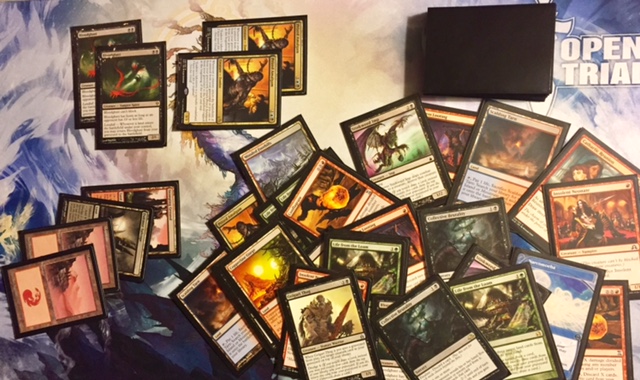
Where the hell do I put all these cards?!?!
Most decks only have about five to ten relevant cards on the table at any one time, whereas Dredge often can have over 30. Almost every card in your graveyard is important, and it’s important for both players to be able to see them quickly. Here’s how I lay it out:
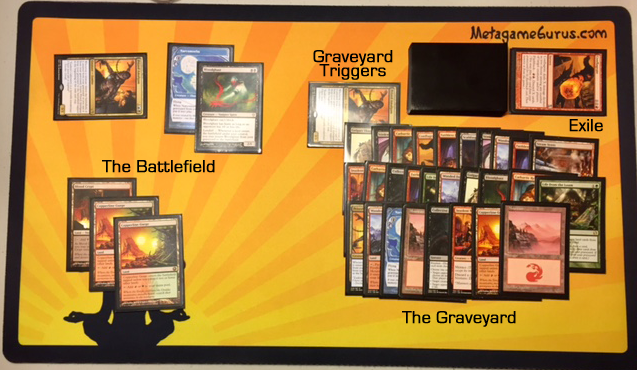
I use the left side of my playmat for the “on the battlefield” area, and the right side for my deck and graveyard. I run the cards in my graveyard in rows of ten, with my exile pile to the top right of my deck.
For my Prized Amalgam triggers, I move them to the top left part of the graveyard, to show that they are still in the graveyard but are triggered and waiting to enter the battlefield.
Simple, clean, and effective. It’s important to have crisp mechanics with the deck, as you can waste a lot of time and miss a lot of triggers if you are clumsy about moving the cards around.
Draw Step, Dredge Five
That’s about everything I know about Dredge.
Dredge is not only an extremely powerful Modern deck, but one that highly rewards familiarity. The deck consistently executes its gameplan almost every time and it’s up to you to find out the best way to go about it. Knowing when to mulligan, both in pre- and post-sideboard games, is going to be extremely important, as is understanding your role in any given matchup. You also must be able to tackle tough Games 2 and 3, and ready to find new and inventive ways to win in the face of devastating sideboard cards.
If you’ve got the stomach to go up against the hate, Dredge is a fantastic choice for any Modern event.




